BMW i4 vs Renault Scénic – Differences & prices compared
Two cars, one duel: BMW i4 meets Renault Scénic.
Which one wins in performance, efficiency and value for money? Find out now!
Costs and Efficiency: When it comes to price and running costs, the biggest differences usually appear. This is often where you see which car fits your budget better in the long run.
Renault Scénic has a significantly advantage in terms of price – it starts at 34600 £, while the BMW i4 costs 49400 £. That’s a price difference of around 14743 £.
In terms of energy consumption, the advantage goes to the BMW i4: with 14.70 kWh per 100 km, it’s a bit more efficient than the Renault Scénic with 16.60 kWh. That’s a difference of about 1.90 kWh.
As for range, the BMW i4 performs minimal better – achieving up to 613 km, about 15 km more than the Renault Scénic.
Engine and Performance: Under the bonnet, it becomes clear which model is tuned for sportiness and which one takes the lead when you hit the accelerator.
When it comes to engine power, the BMW i4 has a clearly edge – offering 601 HP compared to 218 HP. That’s roughly 383 HP more horsepower.
In acceleration from 0 to 100 km/h, the BMW i4 is convincingly quicker – completing the sprint in 3.70 s, while the Renault Scénic takes 7.90 s. That’s about 4.20 s faster.
In terms of top speed, the BMW i4 performs clearly perceptible better – reaching 225 km/h, while the Renault Scénic tops out at 170 km/h. The difference is around 55 km/h.
There’s also a difference in torque: BMW i4 pulls clearly stronger with 795 Nm compared to 300 Nm. That’s about 495 Nm difference.
Space and Everyday Use: Beyond pure performance, interior space and usability matter most in daily life. This is where you see which car is more practical and versatile.
Both vehicles offer seating for 5 people.
In curb weight, Renault Scénic is somewhat lighter – 1822 kg compared to 2070 kg. The difference is around 248 kg.
In terms of boot space, the Renault Scénic offers slightly more room – 545 L compared to 470 L. That’s a difference of about 75 L.
In maximum load capacity, the Renault Scénic performs noticeable better – up to 1670 L, which is about 380 L more than the BMW i4.
When it comes to payload, Renault Scénic hardly perceptible takes the win – 518 kg compared to 480 kg. That’s a difference of about 38 kg.
Who wins the race?
The BMW i4 proves to be dominates this comparison and therefore becomes our DriveDuel Champion!
BMW i4 is the better all-rounder in this comparison.

BMW i4
BMW i4
The BMW i4 beautifully merges the dynamism of a saloon with the efficiency of an electric vehicle, offering a truly exhilarating driving experience. Its design seamlessly blends elegance and athleticism, highlighting BMW's dedication to both aesthetics and performance. Inside, the i4 boasts a high-tech cockpit that harmonises luxury with intuitive technology, allowing drivers to stay connected while on the move.
details @ press.bmwgroup.com
@ press.bmwgroup.com
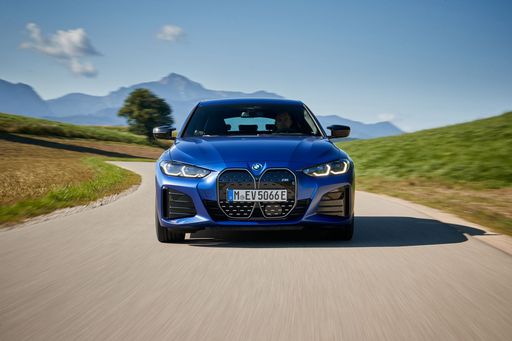 @ press.bmwgroup.com
@ press.bmwgroup.com
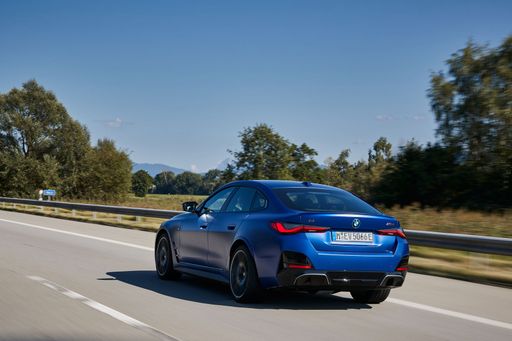 @ press.bmwgroup.com
@ press.bmwgroup.com
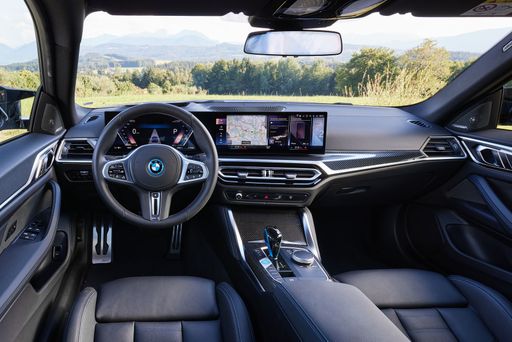 @ press.bmwgroup.com
@ press.bmwgroup.com
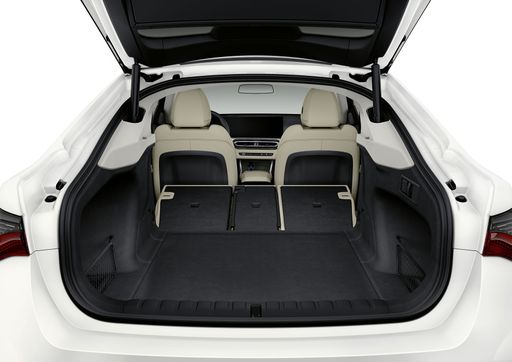 @ press.bmwgroup.com
@ press.bmwgroup.com
Renault Scénic
The Renault Scénic, with its distinctive design, captures attention through its sleek and modern aesthetic. Its interior is thoughtfully crafted, offering ample space and comfort for family travel or long journeys. The Scénic stands out with a strong emphasis on practicality, making it an ideal choice for those seeking both style and functionality in a vehicle.
details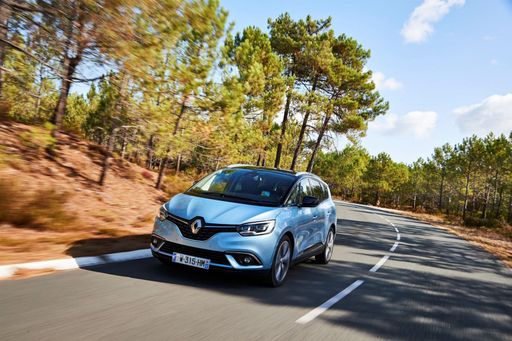 @ Renault
@ Renault
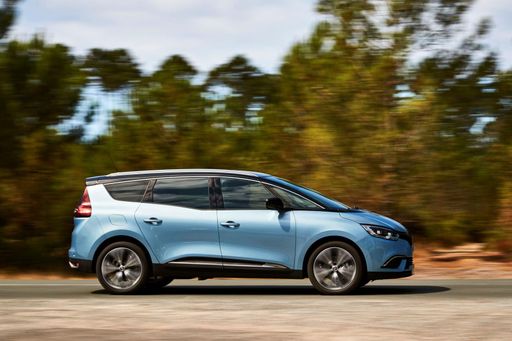 @ Renault
@ Renault
 @ Renault
@ Renault
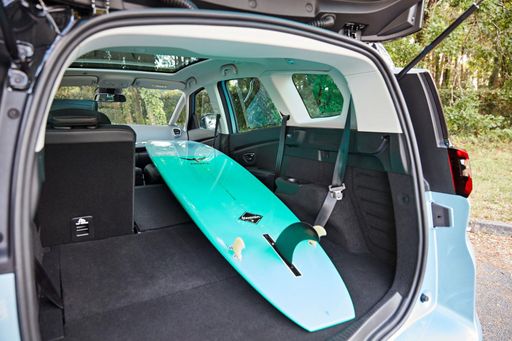 @ Renault
@ Renault
 @ Renault
@ Renault

|

|
|
|
|
Costs and Consumption |
|
|---|---|
|
Price
49400 - 62500 £
|
Price
34600 - 44000 £
|
|
Consumption L/100km
-
|
Consumption L/100km
-
|
|
Consumption kWh/100km
14.7 - 16.7 kWh
|
Consumption kWh/100km
16.6 - 17.5 kWh
|
|
Electric Range
514 - 613 km
|
Electric Range
420 - 598 km
|
|
Battery Capacity
67.1 - 81.3 kWh
|
Battery Capacity
-
|
|
co2
0 g/km
|
co2
0 g/km
|
|
Fuel tank capacity
-
|
Fuel tank capacity
-
|
Dimensions and Body |
|
|---|---|
|
Body Type
Hatchback
|
Body Type
SUV
|
|
Seats
5
|
Seats
5
|
|
Doors
5
|
Doors
5
|
|
Curb weight
2070 - 2285 kg
|
Curb weight
1822 - 1927 kg
|
|
Trunk capacity
470 L
|
Trunk capacity
545 L
|
|
Length
4783 mm
|
Length
4470 mm
|
|
Width
1852 mm
|
Width
1864 mm
|
|
Height
1448 mm
|
Height
1571 mm
|
|
Max trunk capacity
1290 L
|
Max trunk capacity
1670 L
|
|
Payload
445 - 480 kg
|
Payload
514 - 518 kg
|
Engine and Performance |
|
|---|---|
|
Engine Type
Electric
|
Engine Type
Electric
|
|
Transmission
Automatic
|
Transmission
Automatic
|
|
Transmission Detail
Reduction Gearbox
|
Transmission Detail
Reduction Gearbox
|
|
Drive Type
Rear-Wheel Drive, All-Wheel Drive
|
Drive Type
Front-Wheel Drive
|
|
Power HP
286 - 601 HP
|
Power HP
170 - 218 HP
|
|
Acceleration 0-100km/h
3.7 - 6 s
|
Acceleration 0-100km/h
7.9 - 8.6 s
|
|
Max Speed
190 - 225 km/h
|
Max Speed
150 - 170 km/h
|
|
Torque
400 - 795 Nm
|
Torque
280 - 300 Nm
|
|
Number of Cylinders
-
|
Number of Cylinders
-
|
|
Power kW
210 - 442 kW
|
Power kW
125 - 160 kW
|
|
Engine capacity
-
|
Engine capacity
-
|
General |
|
|---|---|
|
Model Year
2025
|
Model Year
2025
|
|
CO2 Efficiency Class
A
|
CO2 Efficiency Class
A
|
|
Brand
BMW
|
Brand
Renault
|
What drivetrain options does the BMW i4 have?
The BMW i4 is available as Rear-Wheel Drive or All-Wheel Drive.
The prices and data displayed are estimates based on German list prices and may vary by country. This information is not legally binding.
